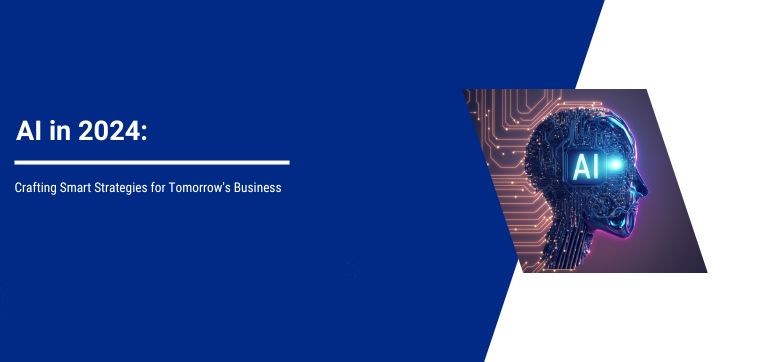Harnessing AI in 2025: A Practical Guide for Businesses
In 2025, artificial intelligence (AI) is more than a technological wonder; it's the engine driving business innovation. As we navigate this AI-centric era, understanding and leveraging AI effectively has become crucial for businesses worldwide.
Evolving AI Models - The New Business Catalyst
The landscape of AI is ever evolving, with models becoming increasingly adept at mirroring and even predicting human behavior. For instance, consider a retail company that uses AI to analyze customer behavior. This AI doesn't just process data; it foresees trends, shapes inventory decisions, and personalizes customer interactions, transforming a simple shopping experience into a tailored journey.
Data: The Heartbeat of AI
In the realm of AI, data reigns supreme. It's the foundation upon which AI systems build their intelligence. Take, for example, a transportation company that uses AI to optimize routes. By analyzing traffic patterns and vehicle performance data, the company can enhance efficiency and reduce operational costs, showcasing how quality data can fuel effective AI solutions.
Tackling AI 'Hallucinations'
AI is powerful, but not infallible. The phenomenon of AI 'hallucinations' - where models generate misleading or incorrect outputs - poses a significant challenge. It's essential for businesses to rigorously test and refine their AI tools, ensuring they deliver accurate and reliable results.
Specialization in AI: Going Beyond One-Size-Fits-All
The era of generic AI solutions is fading. Today, specialized AI models, fine-tuned for specific industries or tasks, are leading the charge. For instance, AI in healthcare now assists in diagnosing diseases with precision, a task that requires a deep understanding of medical data and nuances.
Diverse AI Architectures: A Business Necessity
Diversity in AI architectures is not just a choice; it's a necessity. A multifaceted AI strategy enables businesses to tackle a broad spectrum of challenges. A financial institution, for instance, might use one AI model for risk assessment and another for customer service, each optimized for specific tasks.
Strategic AI Implementation: Finding the High-Impact Areas
Identifying high-impact areas for AI application is critical. Strategic analysis helps businesses focus their AI efforts where they can make the most difference. For example, a manufacturing firm employing AI for quality control can significantly reduce defects, showcasing the importance of targeted AI implementation.
The Bimodal Approach to AI Innovation
Innovation in AI requires a balanced approach. The bimodal method combines the stability of proven AI applications with the exploration of new AI frontiers. This approach allows businesses to maintain core operations while innovating safely.
Responsible Data Management: A Key Pillar
Ethical and responsible data management is at the heart of successful AI implementation. It's about respecting customer privacy and adhering to regulatory standards, which are crucial for building trust and ensuring compliance.
Navigating the Evolving AI Regulations
The regulatory landscape for AI is as dynamic as the technology itself. Businesses must stay agile, adapting to new regulations to ensure their AI practices are not just effective but also compliant.
Amplifying Human Capabilities with AI
At its core, AI is about augmenting human capabilities, not replacing them. It's a tool that, when used effectively, can make us more efficient, insightful, and innovative in our endeavors.
Conclusion
The journey through 2025 and beyond is one where AI stands as a key ally in business innovation. By embracing these AI imperatives, businesses can harness the transformative power of AI, paving the way for a future that's not only smarter but also more humane and intuitive.








